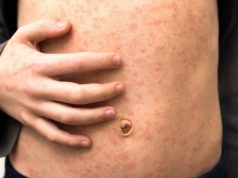Nearly all who were infected had not been vaccinated, researchers say
THURSDAY, Oct. 6, 2016 (HealthDay News) — The measles outbreak that occurred in an Amish community in 2014 illustrates the ongoing threat the infection presents — and the importance of routine vaccination, U.S. government researchers report in the Oct. 6 issue of the New England Journal of Medicine.
Researchers with the U.S. Centers for Disease Control and Prevention describe the outbreak in detail. The outbreak, which ultimately infected 383 people in Ohio, was the largest the United States had seen in over 20 years. It was almost entirely limited to an Amish community, and most who became ill had never been vaccinated against measles.
The 2014 outbreak was traced to two young Amish men who traveled to the Philippines to do typhoon-relief work. The country was also experiencing a widespread measles outbreak at the time. When the workers returned home, they unknowingly brought measles with them. Over several months, the infection spread to 383 children and adults — 99 percent of whom were Amish. Once the outbreak was detected, local health officials and the CDC worked to contain it. That included setting up free vaccination clinics where 10,644 individuals received the measles-mumps-rubella vaccine.
“The key epidemiologic features of a measles outbreak in the Amish community in Ohio were transmission primarily within households, the small proportion of Amish people affected, and the large number of people in the Amish community who sought vaccination,” the authors write. “As a result of targeted containment efforts, and high baseline coverage in the general community, there was limited spread beyond the Amish community.”
Copyright © 2016 HealthDay. All rights reserved.








